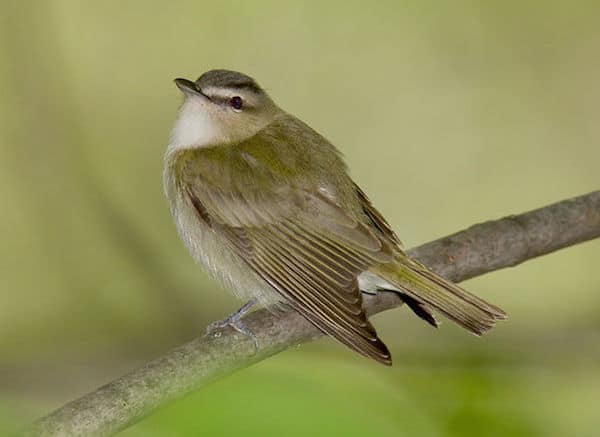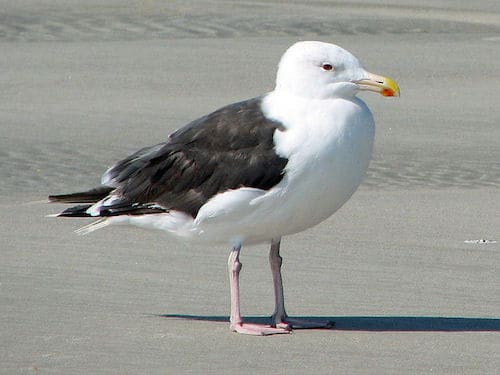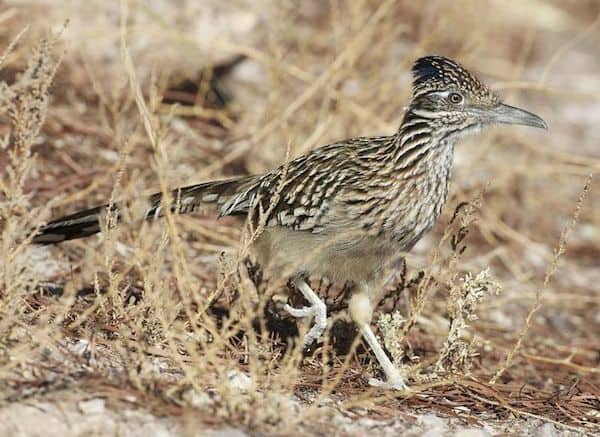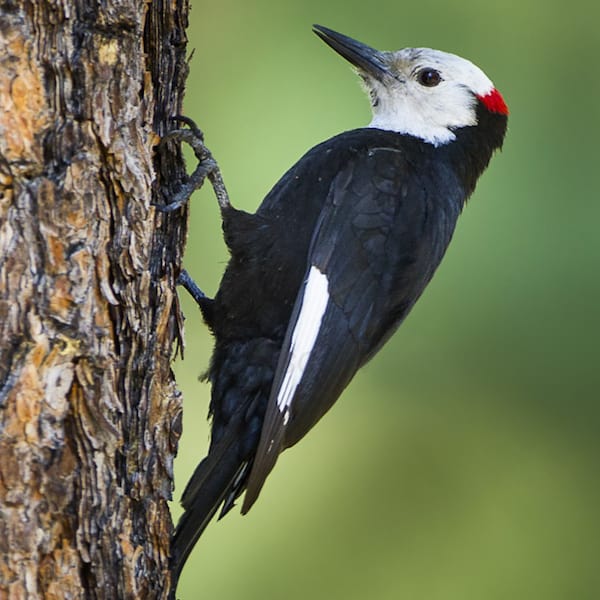The red-eyed vireo is about 6 inches long—an olive-backed, white-bellied bird with a gray cap and bold white stripe over its bright red eyes. Males and females are similar. They have sharp, slightly hooked bills designed to catch insect prey. Despite their small size, they are strong fliers; their twice-yearly migration carries them to the Amazon and back. Red-eyeds, like all vireos, are more deliberate in their movements than warblers.
Listen for
Foraging high in the emerging leaves, the vireo sings almost endlessly—one patient listener counted 22,197 songs from the same bird in one summer day! Singsong, two- or three-note phrases given once every two seconds or so make up the Red-eyed Vireo’s song: here I am, up here, in this tree, over here. Call is a harsh, down-slurred meww!
Find it
Easy to hear and hard to see, the red-eyed vireo is one of the most numerous summer birds of the eastern American woodlands. It arrives in April or early May from its South American wintering grounds, and its song rings out from every wooded tract. Red-eyes are usually found in open deciduous or mixed woodlands with a strong understory of sapling trees. They sometimes occur in large city parks, orchards, or even wooded suburban backyards.
Feed it
Like many small neotropical migrants, the red-eyed vireo feeds mostly on insects. It gleans its food from the upper story of tall deciduous trees, singing as it moves slowly along the branches, peering under and around the leaves. Occasionally, it hovers to snatch a bug from an otherwise unreachable surface. In late summer, the red-eyed vireo will supplement its diet with berries of many kinds.
Nesting Behavior
The female selects a suitable site, usually 5 to 10 feet off the ground on a horizontal forked twig. She builds a tightly woven nest of fine grasses and strips of grapevine, suspending it below the fork and decorating it with bits of lichen on its outer surfaces. Here she incubates her four eggs for 11 to 14 days.
Both parents feed the nestlings for 10 to 12 days until they are ready to fledge. Red-eyed vireos are frequent victims of cowbirds and only rarely do they fight back by building a floor over the cowbird egg and laying another clutch. Most of the time they simply accept the cowbird chick, to the detriment of their own.
WOW!
The red-eyed vireo is the only North American bird with a declarative statement as a Latin name. It means “I am green” in Latin.




